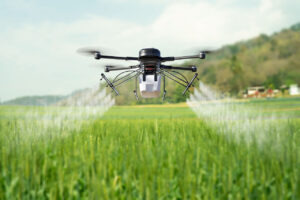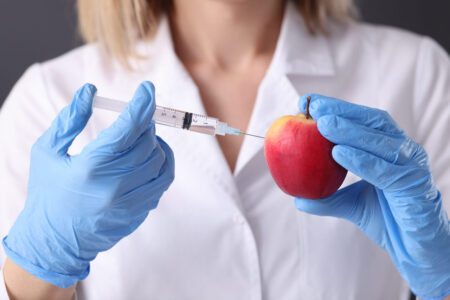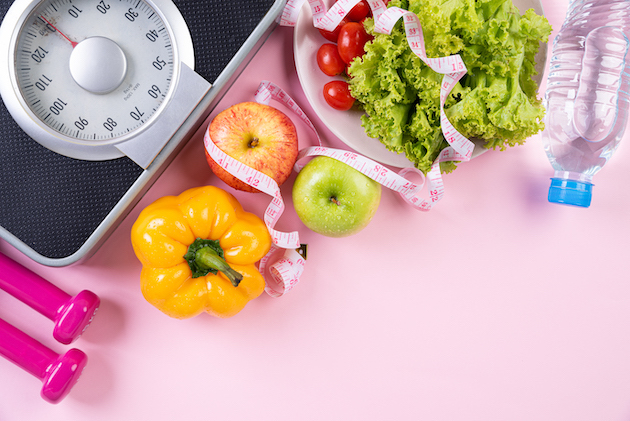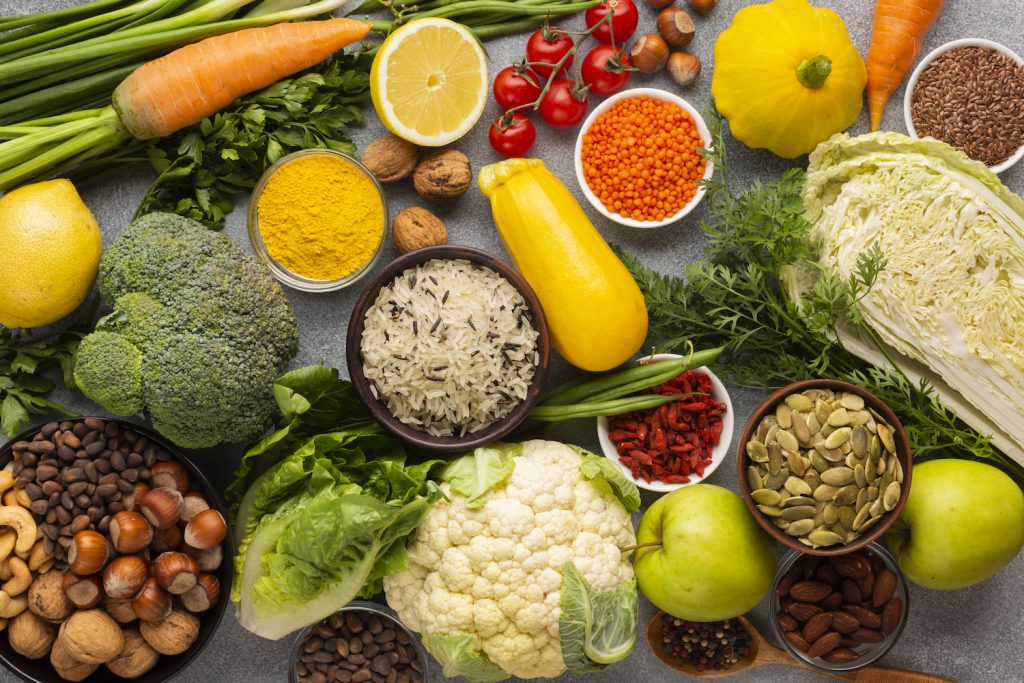It is often askedinwardly, Is it still safe to consume vegetables? Should we reduce the amounts?, prefer more expensive organic produce if possible or prefer animal products?
The season for fresh produce, fruits and vegetables has begun. Since most of us don't have our own garden or farm, we largely depend on the produce that reaches our grocery stores or is offered for sale by local farmers. So let's take a look at how toxic these garden and grain crops are.
Plant protection products — what are they and why are they used?
How do we know if and how much pesticide residue is in vegetables?
Pesticide residue report
Monitoring results
Is there any reason to be concerned?
What are we risking when we eat conventional food?
Summary – how to protect yourself?
Plant protection products — what are they and why are they used?
Most of the plants we eat are grown with the help of artificial fertilizers. Artificial fertilizers make the plants grow faster and bigger, thus increasing productivity. But as we learned in physics class at school, every force has a counterforce. Every intervention also has side effects.
A plant grown with artificial fertilizers is weaker and more susceptible to various diseases than a plant grown on soil fertilized with manure. And this is where various plant protection products (PPCs) come into play. They are used to control weeds, fungal diseases, and insects. In addition, growth regulators and additives are used to improve appearance and extend shelf life.
When I have spoken to an agricultural producer or farmer, the use of chemicals is justified by competition. Without fertilizers and poisons, it is not possible to offer products at a competitive price. That sounds very logical. If we draw a parallel with the use of doping in sports, it is clear that no matter how bland the porridge you eat and how much exercise you do, you cannot fight chemicals.
Fortunately, in agriculture, like in sports, the use of chemicals is limited. In the European Union, maximum limits for the use of pesticides have been established to mitigate potential risks. In addition, their use is also limited by Estonian legislation.
In Estonia, only those pesticides that are included in the TKV register can be used. Generally, we are allowed to use a couple of insecticides (pesticides), a couple of weed killers, and 3–5 fungicides per crop, which is less than in neighboring countries.
How do we know if and how much pesticide residue is in vegetables?
 The Veterinary and Food Board (VTA) in cooperation with the Agricultural Board (PMA) controls how much and which TKVs reach our food tables. In addition, scientists from the University of Life Sciences also study the situation from time to time, and studies from other countries also provide some information. This mainly concerns imported plants.
The Veterinary and Food Board (VTA) in cooperation with the Agricultural Board (PMA) controls how much and which TKVs reach our food tables. In addition, scientists from the University of Life Sciences also study the situation from time to time, and studies from other countries also provide some information. This mainly concerns imported plants.
For example, the PMA carries out around 1,100 surveillance activities related to plant protection products per year. The VTA carries out around 10,000 inspections per year to assess whether food producers are following the established rules. Together, the PMA and the VTA take samples per year Between 300-400.
In summary, it can be said that TKV residues are found to a greater or lesser extent in about half of the plants on sale. Since the methodology and objectives of monitoring and scientific research are different, it is difficult to compare them, but the monitoring results still provide some picture of the situation.
Herbicide and pesticide residue report
For example, let's look at the report of VTA and PMA samples in 2019. The foods have apparently been selected according to their risk profile. The mandatory list is provided by the EU and something has been added according to local circumstances.
The number of food items in the subcategories and the number of samples taken from them varies greatly. Most of the samples were taken from vegetables (including vegetables, fruits and berries). Among the cereals, oats and barley were included in the sample, with 6 samples taken from each.
Animal foods: salmon, fish and fish products from the Baltic Sea, a total of 18 samples. In addition, drinking milk and lard, each with 11 samples. Alcohol is represented by wine, of which 10 samples were taken, and special foods include cereal-based baby food with three samples.

Monitoring results
For the sake of simplicity, I will divide the results of measuring plant toxins into three categories:
- No TKV residues were found
- TKV residues remained within the normal range (including those whose results were below the laboratory's detection limit)
- TKV residues exceeded the standard (including those that remained within the standard after taking into account the measurement uncertainty)
If you look for vegetables that had the most samples with TKV residues, the following stand out (clean sample / below the limit sample / above the limit sample)
- strawberry (11/27/0),
- tomato (6/13/0),
- peach (0/11/0) and
- apple (4/11/0).
However, since the number of samples taken varies greatly from crop to crop, this does not give a completely accurate picture. For example, 11 samples of apple and peach each had TKV residues, four samples taken from apples had no residues, while there are no clean samples of peach.
If we look for those cultures in the results where all samples contained TKV residues, we get a completely different list. The top three on this list are:
- tangerine (0/7/2),
- orange (0/8/1) and
- carrot (0/2/1).
They had no clean samples and in addition there was at least one sample that exceeded the normal limit. They were followed by
- peach (0/11/0),
- lemon (0/9/0),
- grape (0/9/0),
- Baltic Sea fish (0/6/0) and
- raspberry (0/2/0).
On the positive side, we could highlight the foods from which all samples were clean:
- drinking milk (11/0/0),
- cereal-based baby food (3/0/0),
- grape (1/0/0),
- worried (1/0/0),
- bulb onion (1/0/0) and
- garlic (1/0/0).
While the number of samples taken from milk is quite solid, the number of samples for other so-called clean products is quite small, but still helpful. And we must remember that samples taken for surveillance purposes do not give us as reliable a picture as a scientific study conducted with the right methodology.
Is there any reason to be concerned?
I assume that the above story will divide readers into two. For many, it is probably enough that there are rules in place for the use of herbicides and pesticides and that compliance with them is monitored. Those products where the limits are widely exceeded are removed from the market (assuming they have not yet been consumed) and proceedings are initiated against the parties involved.
The VTA reports that in 2019, 1% exceeded the limit by a significant margin (50%) from all samples taken, and compared to other European countries, we are at the same level. However, they admit that more products exceeded the limit than this 1% and that not all products that should have been removed from the market were removed because they had already been eaten.
But every coin has another side. Given the growing popularity of organic production, it can be assumed that there are more and more people for whom even toxic residues within the limits are too much. Not to mention those samples that exceed these limits. And even if all the residues of pesticides sprayed on the fields do not directly end up in our food, they still pollute our fields and water bodies.
It is of course good that limits exist. However, we must also take into account that the agricultural sector in Europe operates on the basis of large subsidies. Therefore, it is quite likely that risk assessments and limits are also a compromise between human health and farmers' income based on current knowledge.
The limits have been found scientifically, but largely based on studies funded by the manufacturers themselves and on animal tests, and these results may not be reliable and transferable to humans one-on-one. It is also not possible to assess the interaction of different poisons. For example, additives are added to glyphosate that increase its effect several times, but their effects have not been taken into account in the studies.
Let us remind you that even Estonia's relatively strict restrictions allow the use of an average of ten different plant protection products on one crop. So it is not at all ruled out that as additional research is added, the limits will be lowered and the rules made stricter.
For example, the conditions for using glyphosate (including Roundup) were tightened as of December 1, 2018. It is now prohibited to use it to stun or dry crops before harvest. In other words, a few years ago, this weed killer was sprayed just before harvest and everything was legal.
Also, not all member states are in order with the regulations already in force. The EU has had a directive on the sustainable use of pesticides in force since 2009, the implementation of which has still facing problems in most Member States.
How much someone should worry about pesticide residues in their food also depends on each individual's health and risk tolerance. The amount of pesticide residue that seems okay to one person may cause severe discomfort to another.
What are we risking when we eat conventional food?
 Conventional food is conventional, fertilized and poisoned food. Food grown in the traditional way, without pesticides, is called organic. What are we risking by taking the path of least resistance and wallet-friendliness?
Conventional food is conventional, fertilized and poisoned food. Food grown in the traditional way, without pesticides, is called organic. What are we risking by taking the path of least resistance and wallet-friendliness?
Although plant protection and additives are not inherently bad, they still pose significant risks to nature and our health. State supervision is based on officially established limits. However, studies have been conducted both in Estonia and elsewhere that show that in certain areas (e.g. the use of glyphosate) some risks have been ignored or underestimated. This in turn calls into question the reliability of the limits.
In summary, the main topics regarding risk assessments are as follows.
- The studies that form the basis for pesticide residue limits have not been conducted impartially because they have often been funded by pesticide manufacturers.
- The studies that form the basis of the limits do not take into account the combined effects of different active ingredients and additives. In combination with additives, the effect of glyphosate, for example, can be 200 times greater. Although the Ministry of Rural Affairs claims on its website that the limits include a safe margin, which can be tens or hundreds of times smaller than the dangerous limit, an additive that increases the effect can still quite easily lead us to to or beyond the dangerous limit.
- Some additives used with the active ingredient can be more toxic than the active ingredient. For example, the excipient tallomaine was banned in the EU in 2016, as it was found to be highly toxic.
- Plant protection products Residues may cause health problems, e.g. hormonal disorders in food digestion, diabetes, etc.
- People who are significantly more sensitive than average, and children whose body weight is significantly lower than adults, should be especially careful.
- Glyphosates are said to be able to damage embryonic and placental cells at doses 100 times lower than the limits permitted in agriculture.
Summary – how to protect yourself?
 The legislative mills are grinding the issue of pesticide residues steadily but slowly. What can be done until the current EU rules have been implemented nationally or new limits have been agreed upon?
The legislative mills are grinding the issue of pesticide residues steadily but slowly. What can be done until the current EU rules have been implemented nationally or new limits have been agreed upon?
If possible, grow your own food or buy from a local organic farmer. Yes, I understand that many people don't have this opportunity, either because of where they live or financially, but if this opportunity exists, you should take advantage of it, because in addition to the lower chemical load, there are many other desirable things about organic produce.
Organic produce contains more polyphenols, flavonoids, vitamins C and E, and omega-3 fatty acids than conventional food. These are all essential nutrients for a healthy life that we tend to lack.
The Estonian University of Life Sciences' organic food newsletter attributes cancer-preventing, anti-inflammatory, and immune-strengthening effects to organic food, and it helps prevent bone loss, diabetes, and cardiovascular diseases.
If it is not possible to switch to organic food entirely, you can reduce the risk by replacing the foods that contain more toxic residues and that you consume more frequently with organic food. If organic food is not available, then prefer Estonian food.
Studies show that Estonian produce contains significantly fewer residues of plant protection products (poisons and pesticides) than imported goods. However, we cannot rely on this alone, because our farmers also use more and more plant protection products every year. For example, glyphosate is already used even more than the EU average.
In ordinary food, the presence of toxic residues can be somewhat reduced by careful washing, peeling or soaking. Washing tomatoes, cucumbers and strawberries reduced pesticide residue content 10–20%. Washing tomatoes with brine (10%) reduced the content of various chemical residues by 27–91%. Soaking for 30 minutes in 10% acetic acid solution reduced the content of toxic residues in cucumbers 44–70%.
In addition to the above, a varied diet, including consumption of products from different manufacturers, helps to spread the risks.

Allan Randlepp
NutritionistAllan is a nutritionist and trainer whose favorite topics are lifestyle and longevity, including nutrition and physical activity.
Why should you eat green vegetables and salad? + Recipes





